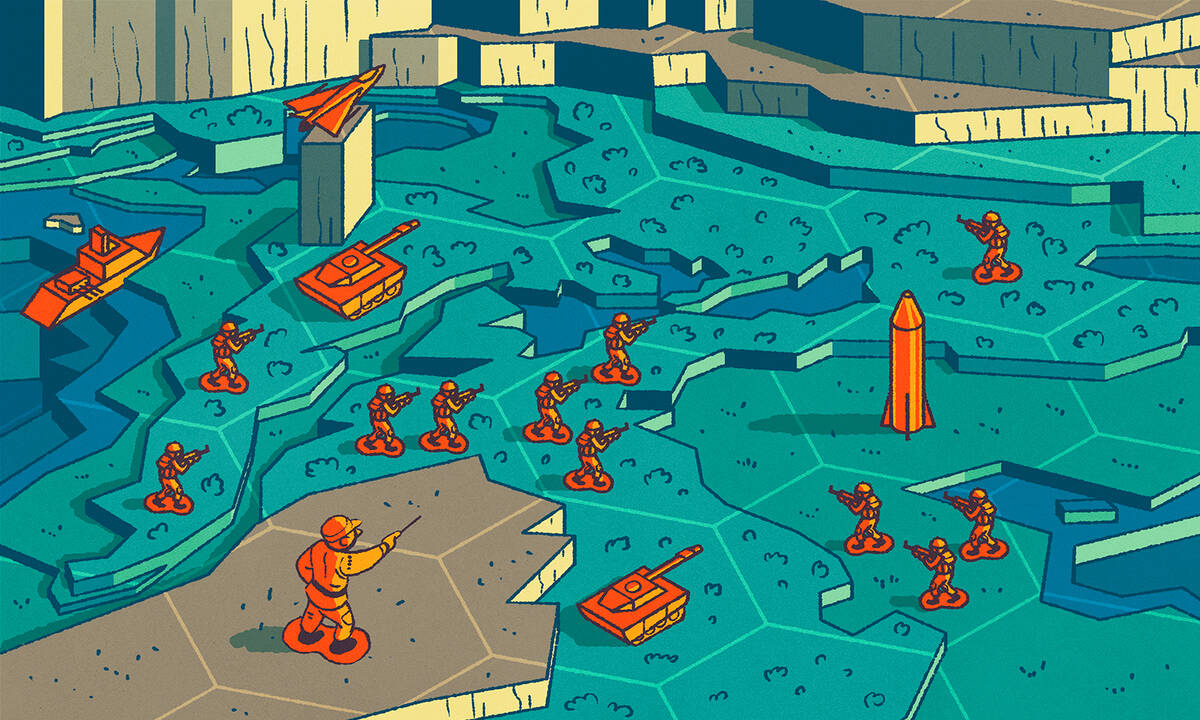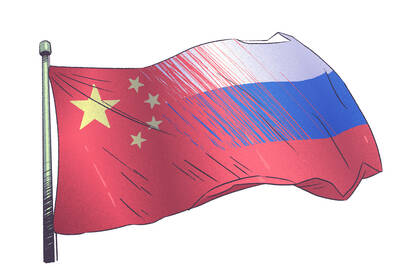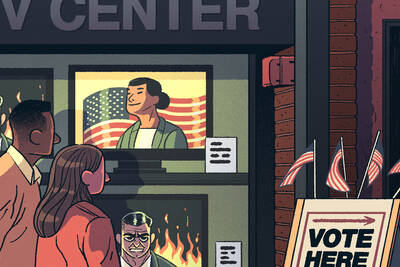Politics & Elections Economics Jun 3, 2019
One Nation Invades Another. What Will Happen Next?
Game theory reveals why some conflicts escalate and others don’t.

Michael Meier
Consider two countries teetering on the brink of war. One nation makes an aggressive move. Is the other party likely to retaliate and escalate the conflict? Or will they back off, allowing tensions to simmer down? It’s a question that leaders have gotten wrong over and over again throughout history.
Take World War I, for instance. Britain and Germany got caught up in an arms race to build more ships, each hoping to cow the other into submission. Instead, both countries became increasingly aggressive. “And then a random event in Yugoslavia triggered a horrible war,” says Sandeep Baliga, a professor of managerial economics and decision sciences at Kellogg.
Having seen the potential unintended consequences of aggressive foreign policy, leaders in the following decades worried that acting tough would provoke another devastating conflict. So they took the opposite tactic, staying friendly even as Germany grew increasingly hostile. That was a mistake too; leaders were too accommodating of Hitler, which some historians argue helped bring about World War II. Here, war resulted not from escalating tensions but from a lack of deterrence.
In both cases, “we just miscalculated because we didn’t really understand the true nature of the conflict we faced,” Baliga says.
So which factors determine when taking a hostile stance will deter an opposing nation from becoming more aggressive, and when it will provoke a counterattack, leading to more bloodshed?
Using a mathematical model, Baliga and a coauthor explore several factors—including the marginal value of extra resources, the level of potential devastation, and the size of “first mover advantage”—that can help determine whether conflicts will escalate or simmer down.
Keeping these factors in mind could help leaders determine the right strategy—because the specifics matter: “The optimal policy in one situation can be completely different in the opposite situation,” Baliga says.
Modeling Conflict
To understand how specific factors affect the likelihood of conflict, Baliga and Tomas Sjöström of Rutgers University created a mathematical model representing two players. Each player occupies part of a territory, and they can try to grab land from the other player or not. If one player attacks, the other must decide whether to give in or fight back. (In international relations parlance, an aggressive player is a “hawk” and a peaceful player is a “dove.”)
In the model, each party tries to maximize its payoff: the value of the land it possesses minus the cost incurred to retain that land. The final payoffs depend on what both players end up choosing. If both choose dove, then the status quo remains in place. If one chooses hawk and the other chooses dove, then the hawk captures land from the dove. If both choose hawk, trying to go after the other’s land, then there is a war; the payoff for the eventual winner depends on how much land is destroyed in the war, among other factors.
“The optimal policy in one situation can be completely different in the opposite situation.”
The probability that each player will choose hawk depends on the economic cost of attacking (which could include the direct expense of deploying troops, or the sanctions that disapproving nations place on an invader), as well as the destruction that would be caused by war and the player’s first-mover advantage—the benefit of being the first to strike, rather than the party put on the defensive.
The model captures how the destructiveness of war and first-mover advantage can vary depending on military technologies. For example, during the times of siege warfare, war was less costly (swords and spears can only do so much damage) and attackers who made the first move had very little advantage. “You could trot up to my castle, but as long as I have enough water and so on, I could survive for many years,” Baliga says. When cannons came along, however, invaders gained a huge first-mover advantage, and conflict also became more destructive.
In the age of nuclear weapons, the potential destruction of war has become unfathomably large. However, whoever drops the first bomb has no advantage, since the victimized country will almost certainly retaliate in kind, leading to mutual destruction.
Which Factors Affect the Likelihood of War?
The researchers first looked at what happens as the potential destruction caused by war increases.
It might seem logical to assume that as the cost goes up, both players worry about triggering a war—thus, they should become more dovish, and the probability of war should go down. But empirical research has shown that this is not always the case. In fact, as countries begin acquiring more destructive weapons, the probability of conflict breaking out actually increases at first (international relations scholars call this the “stability–instability paradox”).
Using their model, Baliga and Sjöström offer a viable explanation for this counterintuitive phenomenon.
Suppose a hawkish Player A encounters a dovish Player B. The more destructive the conflict between them would be, Baliga explains, the more land Player B would be willing to give up to avoid war. Because Player A realizes this, she actually has a greater incentive to be aggressive, as she knows she can likely extract more land.
But after the cost of war exceeds a certain threshold, the likelihood of conflict drops. At that point, a dovish player has nothing more left to give, so threatening them with a more destructive conflict risks triggering a more destructive war with no clear benefit.
The researchers also investigated a phenomenon called the “Thucydides trap” (named after the ancient Greek historian who argued that the war between an increasingly powerful Athens and fearful Sparta was “inevitable”). The Thucycides trap says that war will result whenever a rising power threatens an established power—a pertinent issue today, given the rise of China.
If China’s military becomes more powerful, the United States will likely become more dovish.
But the model provided mixed evidence for this theory. It suggested that as the rising power gains military strength, it does become more aggressive. However, as the established power becomes relatively weaker, it increasingly wants to avoid conflict. “It’s not necessarily the case that the chance of war goes up,” Baliga says. “The status quo power backs off.”
For instance, if China’s military becomes more powerful, the United States will likely become more dovish. “It’s not that the status quo power is particularly happy about this,” he notes. “The chance of war will decline,” but only because the U.S. is willing to surrender its dominance to avoid war.
Escalation or Deterrence?
The researchers also sought to understand what determines whether an opposing party is more likely to back down or fight back against an aggressor.
They found that when the cost of war is high and one side plays hawk, the other side has a greater incentive to play dove. From the attacked party’s perspective, “I’m scared of having a fight because it would be so destructive,” Baliga says. “I want to back off.”
However, the situation was different in cases where the cost of war is low and the attacker has a big first-mover advantage. Under those circumstances, if one party plays hawk, the other is likely to respond in kind.
The reason: When an attacker has a big first-mover advantage, they can extract a lot of resources from their opponent. The attacked party, therefore, has an incentive to aggressively fend off the invasion—and since the cost of war is low, they risk little by doing so. Thus, they fight back.
How to Prevent Conflict
So how can one side maximize the chances that the other side will act peacefully under various circumstances?
The optimal strategy is not easily apparent. For instance, a country might attempt to minimize possible destruction by building up defenses, such as the “Star Wars” anti-missile system proposed by Ronald Reagan. While such a move would clearly make an attack less painful, there is also a chance it could increase the likelihood of conflict. After all, the Soviet Union could see “Star Wars” as increasing Reagan’s incentive to attack, knowing the U.S. would now be safe from counterattack. In that case, the Soviets might respond to the perceived aggression with aggression of their own, such as an airstrike—and the defensive move would have backfired.
But Baliga and Sjöström found that such a tactic will typically promote peace in an escalating conflict, by decreasing the amount of resources the other party could gain from a surprise attack. “They’re going to get less out of it,” he says. “So they’re more likely to play dove.”
“Our model allows you to trace out the full possible results of any strategy you are considering, so there is less chance of unintended consequences.”
Or consider another potential tactic aimed at getting the other party to back down: A country looking to hold onto a contested piece of land might try to make that land more valuable. For instance, imagine that player A builds more houses or factories on a contested territory. One might assume that this will make player B more likely to back down, by signaling that player A will fight tooth and nail to retain that land.
But the researchers’ model suggests that this strategy may not go according to plan. Since Player A now considers that land very valuable, Player B may (rightly) suspect that Player A would rather cede a portion of the land rather than risk losing it in battle—and may therefore become more likely to attack, in order to win a concession. “They realize you’re scared of giving it up, so they can take some,” Baliga says.
The Optimal Policy Depends on the Scenario
Of course, the decisions we make today inevitably affect the decisions we can make tomorrow. So finally, the researchers considered what happens when the two parties “play” for more than one round.
Here, it became clear that launching attacks comes at a future cost. After being attacked, an opponent wants to reclaim lost territory and so is “out to get you” in the next round, Baliga says. “They have less to lose.”
So, in a game with two rounds, the more cooperative you are today, the more likely it is that your opponent will be cooperative tomorrow—and vice versa. In cases where conflict is not settled once and for all, but where nations continue squabbling over the same stock of land, tensions are likely to escalate. As such, Baliga says, it pays for both parties to be cautious in order to avoid triggering a calamitous chain of events.
The study still leaves many questions unexplored. For instance, scenarios might involve many rounds of play, adding new strategic wrinkles as they unfold. And what happens if three or more parties can form coalitions with one another?
“There are a million issues we haven’t studied,” Baliga says.
Still, the research could help leaders better understand their foreign policy options. “The optimal policy really depends on the nature of the conflict,” says Baliga. “Our model allows you to trace out the full possible results of any strategy you are considering, so there is less chance of unintended consequences.”



